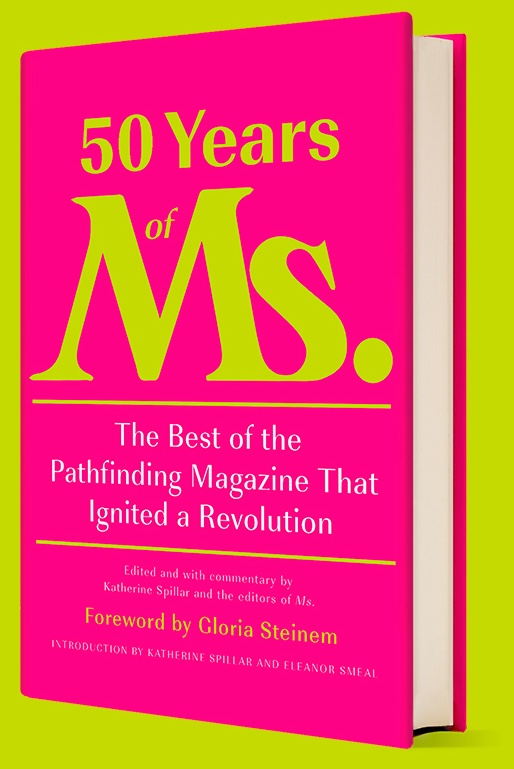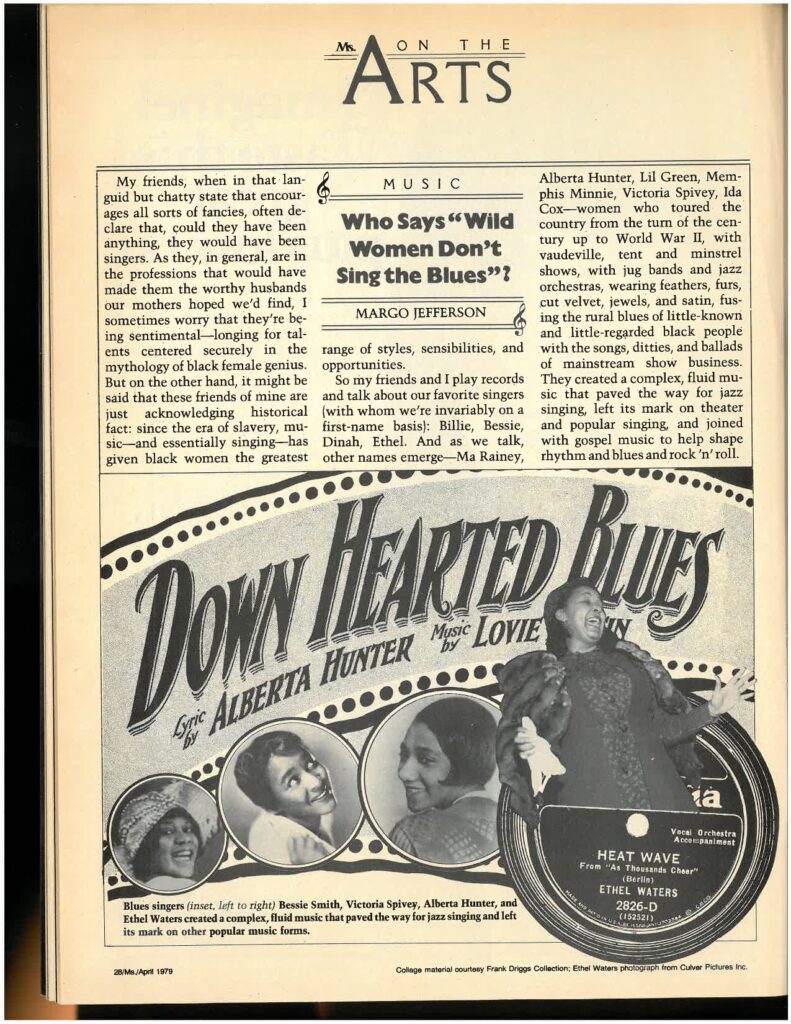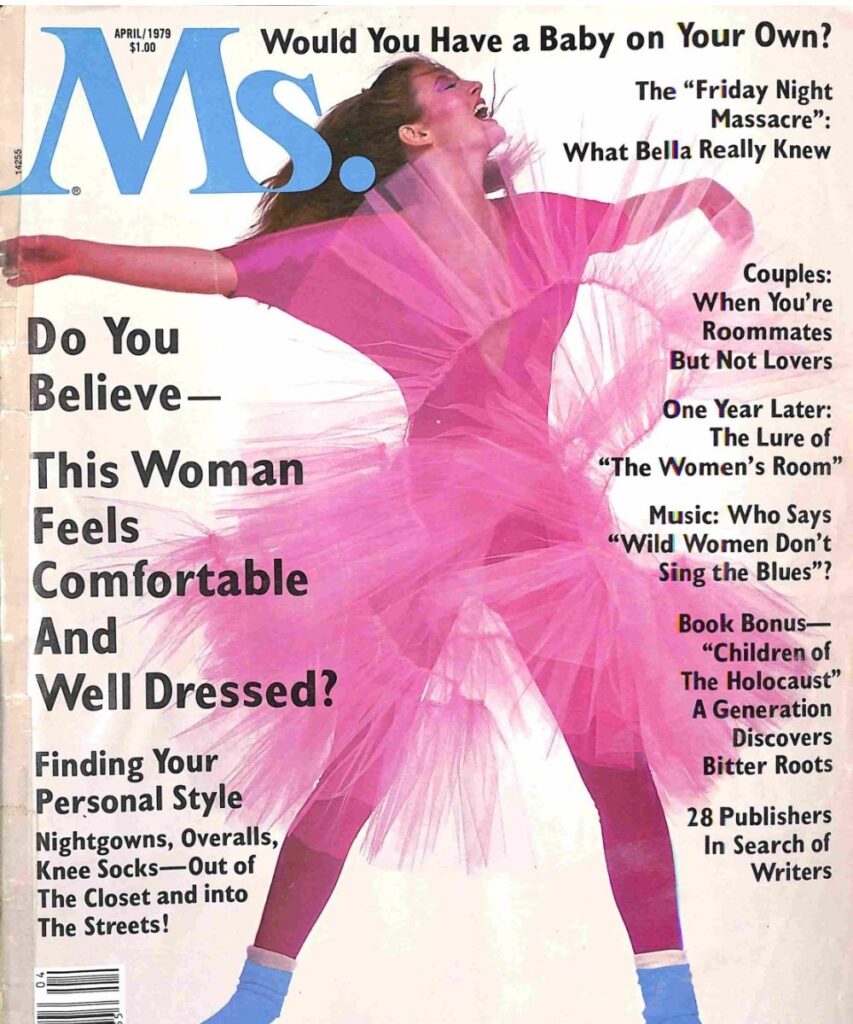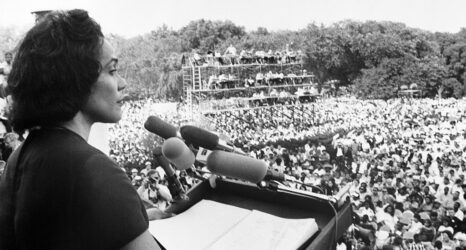
To pay tribute to five decades of reporting, rebelling and truth-telling, From the Vault includes some of our favorite feminist classics from the last 50 years of Ms. For more iconic, ground-breaking stories like this, order 50 YEARS OF Ms.: THE BEST OF THE PATHFINDING MAGAZINE THAT IGNITED A REVOLUTION (Alfred A. Knopf)—a stunning collection of the most audacious, norm-breaking coverage Ms. has published.

From the April 1979 issue of Ms. magazine:
My friends, when in that languid but chatty state that encourages all sorts of fancies, often declare that, could they have been anything, they would have been singers. As they, in general, are the professions that would have made them the worthy husbands our mothers hoped we’d find, I sometimes worry that they’re being sentimental—longing for talents centered securely in the mythology of Black female genius.
But on the other hand, it might be said that these friends of mine are just acknowledging historical fact: Since the era of slavery, music—and essentially singing—has given women the greatest range of styles, sensibilities and opportunities.
So my friends and I play records and talk about our favorite singers (with whom we’re invariably on a first-name basis): Billie, Bessie, Dinah, Ethel. And as we talk, other names emerge—Ma Rainey, Alberta Hunter, Lil Green, Memphis Minnie, Victoria Spivey, Ida Cox—women who toured the country from the turn of the century up to World War II, with vaudeville, tent and minstrel shows, with jug bands and jazz orchestras, wearing feathers, furs, cut velvet, jewels and satin fusing the rural blues of little-known and little-regarded Black people with the songs, ditties and ballads of mainstream show business. They created a complex, fluid music that paved the way for jazz singing, left its mark on theater and popular singing, and joined with gospel to help shape rhythm and blues and rock ’n’ roll.
The blues, with its 12-bar, 3-line structure, is as intimate and highly charged as a lyric poem, as spare and realistic as a newspaper story. The blues expresses and exorcises trials, tribulations and survivals. A real folk music, it emerged from the work of songs, shouts, chants and spirituals of slavery. In a tradition that was African and from a necessity that was African and from a necessity that was American, music, both for slaves and the closely watched free Blacks, was a vital means of social, political and personal expression.
The blues form is said to have appeared in the late 19th century, reflecting the psychic—and therefore the musical—changes that Emancipation brought. There was a new individuality, solitude and freedom. Work songs and spirituals are group expressions, whatever the singer’s distinctiveness; blues are soliloquies, monologues, whatever the group’s emotional participation. In its early rural form—sung in doorways, juke joints, alleys, on the roads and on back porches, with moans, slurs, falsetto notes, and rhythm flexibility playing against simple structure—the blues was as close to speech as to singing. As it took up with other musical styles (vaudeville, Tin Pan Alley balladry, ragtime), it became smoother and more theatricalized, more calculated: formal rather than folk art. It invaded brothels, theaters, cabarets, dance halls and the growing recording industry. And it was taken there by women.
Much has been made by blues collectors of the rough, itinerant lives of the male singers, as they moved from town to town, taking odd jobs, working, brawling, struggling, never far away from the long arm of the white man’s law. But many women did escape from drudgery and domesticity through show business. Traveling circuses, minstrel shows, and carnivals offered them adventure, excitement, and—if they were lucky—glamour and fame.
They began young. Gertrude “Ma” Rainey, born in 1886 and considered the link between the older folk style and the sleeker city one, was dancing and singing in minstrel shows by 1900, and performing the blues by 1902. She claimed to have first heard them from a young girl in Missouri who sang an odd, mournful lament about her man’s desertion. Ma Rainey paid her tribute to this anonymous woman “composer” in the words of her “Last Minute Blues”: “If anybody asks you who wrote this lonesome song/Tell ‘em you don’t know the writer, but Ma Rainey put it on.”
Blues songs are filled with melancholy portraits of young girls left by parents to make or break their lives as they can. Bessie Smith, born in 1894, and orphaned at the age of nine, sang for small change on the streets of Chattanooga, and joined Ma Rainey’s minstrel shows in 1912. Ethel Waters, born in 1900, whose sweet, sinuous voice eventually led her into musical theater, left her job as a $4.50-a-week chambermaid in 1917 to join a vaudeville troupe. And Alberta Hunter, the only veteran of the classic blues era still performing regularly, was born in 1895, ran away to Chicago at 11 or 12, began as a potato peeler in boarding house, and within a few years became the “Idol of Dreamland.” (Dreamland was the city’s smartest Black cabaret.)
Blues women were flamboyant, commanding and versatile: Their repertoires ranged from “St. Louis Blues” to “Mammy’s Little Coal Black Rose” to “A Good Man Is Hard To Find.” At a time when popular music was apt to be arch and playful about sex and romance, blues dared to be erotic, frank, and cynical. And, if most popular song protagonists were lively, spanking-clean boys and girls, ladies and gents, blues protagonists were as apt to be prostitutes, drifters, and laundry workers as dashing belles and swells.
Did audiences that found the bravado, toughness and sexual explicitness of blues exciting in Black men find it distressing, vulgar, inappropriate in women?
Like every blues voice, every blues song is personal, but there is a communal reserve of feelings, phrases, and emotional conventions that all singers drew upon again and again. In no other popular musical form do women chronicle and confront so directly the conditions of what used to be lightly called “the battle of the sexes.” Or what is called, somewhat pompously, existential loneliness”; or clinically, “depression”; or, quite simply, “the cost of living.”
Listen to Memphis Minnie’s “In My Girlish Days”:
I flagged a train,
Didn’t have a dime.
Trying to run away from
That home of mine.
I didn’t know no better
In my girlish days.
Or Ida Cox’s “Wild Women Don’t Get the Blues”:
I’ve got a disposition
And a way of my own,
When my man starts kicking,
I let him find another home.
I get full of good liquor,
walk the streets all night,
Go home and put my man out,
if he don’t act right.
‘Cause wild women don’t worry—wild women don’t have
the blues.
Ma Rainey’s ironic “Victim of the Blues” is:
Too mad to worry,
Too mean to cry.
Too slow to hurry,
Too good to lie.
That man he left me,
Never said good-bye.
Too old to stay here,
Too sick to die…
And Alberta Hunter’s feisty heroine says “I’ve Got a Mind”:
It’s snowing outside,
my feet are on the ground,
It’s snowing outside
and my feet are on the ground.
If I ever want to be somebody,
sure got to leave this town.
I’d rather be in Mississippi
floating like a log,
I’d rather be in Mississippi
River floating like a log,
Than to be here in New York
Letting these men treat me like a
dog.
How could such a vital form have faded, to the point that blues women today seem endangered species?
Certainly the growth of jazz and popular music played a part: By the 1940s, singers like Billie Holiday and Dinah Washington were taking blues techniques and feelings to those other, more popular and economically remunerative forms. And though Washington, along with Lil Green, helped pioneer the rhythm and blues style that was to give birth to rock ’n’ roll—a style that was taken up by Big Maybelle and carried on by Big Mama Thornton and Koko Taylor—today the women of the ’40s are remembered largely as occasional figures in a landscape dominated by men. The hard-edged urban style is seen by its admirers as a deeply masculine style. It is as if, at a certain point, a woman singing the blues could no longer capture and hold the imagination of her public.
Did audiences that found the bravado, toughness and sexual explicitness of blues exciting in Black men find it distressing, vulgar, inappropriate in women? Did the women themselves—audiences and performers—striving for a more genteel, mild-mannered style of femininity, reject the image of blues women?
At present, old age and death seem to be the best guarantees of recognition for a Black blues woman. Both offer audiences the reassuring distance of history.
Victoria Spivey and Sippie Wallace, veterans of the classic era, began to reclaim long-lost public attention in the 1960s. The early 1970s saw the purchase of a tombstone for Bessie Smith’s unmarked grave, the reissue of her records, the publication of a fine biography by Chris Albertson, and a well-received Broadway tribute by Linda Hopkins. The year 1978 brought the Alberta Hunter of “Remember My Name” as 1922 first brought her “Downhearted Blues” to eager record buyers. To watch her now is to rest assured that the 56 years separating these two debuts have only bettered her tart, shrewd, discreetly roguish style.
But what finally is a style without new exponents, or a tradition without descendants? My friends and I have lately begun to long for new blues women to revive the great traditions and extend them.

Up next:
U.S. democracy is at a dangerous inflection point—from the demise of abortion rights, to a lack of pay equity and parental leave, to skyrocketing maternal mortality, and attacks on trans health. Left unchecked, these crises will lead to wider gaps in political participation and representation. For 50 years, Ms. has been forging feminist journalism—reporting, rebelling and truth-telling from the front-lines, championing the Equal Rights Amendment, and centering the stories of those most impacted. With all that’s at stake for equality, we are redoubling our commitment for the next 50 years. In turn, we need your help, Support Ms. today with a donation—any amount that is meaningful to you. For as little as $5 each month, you’ll receive the print magazine along with our e-newsletters, action alerts, and invitations to Ms. Studios events and podcasts. We are grateful for your loyalty and ferocity.





